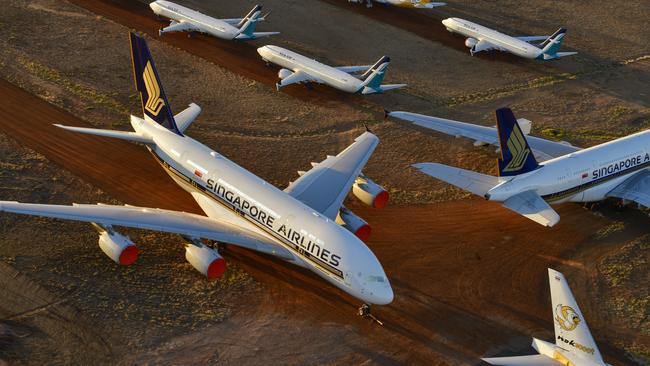The bigger they are, the harder they fall: A380s have nowhere to go
Even before the coronavirus sent the aviation industry into a tailspin, A380s were on shaky ground.

Even before the coronavirus sent the aviation industry into a tailspin, A380s were on shaky ground.
Airbus was planning to end production of the four-engine superjumbos in 2021, following the painful admission that demand had dried up.
Despite their popularity with passengers, the largest and most expensive commercial passenger aircraft ever made was widely considered by airlines to be too big to fill, and too inefficient to operate.
A380s’ biggest customer, Emirates, had slashed its order by 39 planes and Qantas cancelled its outstanding order for another eight of the double-decker jets, having moved on to smaller, greener Boeing 787-9s.
But moves by Qantas and Singapore Airlines to refurbish their existing A380s suggested the aircraft would remain in operation for another decade.
Then COVID-19 struck, and travel restrictions forced airlines to ground much of their fleet and workforce as they struggled to stay solvent.
Although it remains largely unknown how the aviation industry will look in the post-pandemic world, there is much speculation that it will not include A380s, or for that matter 747s.
Qantas was already planning the retirement of its remaining 747s by the end of the year, and that now looks likely to be brought forward, with two sent for storage in the Mojave Desert and the other three to follow in coming weeks.
As for the airline’s 12 A380s, Qantas has put a pause on the continued refurbishment of the planes, leaving six in limbo.
“At the moment … we don’t know when big markets like the US and the UK, which use the A380s, will open,” said Alan Joyce at the airline’s third-quarter trading update.
“There is a potential to bring all 12 back, there is a potential to bring less than 12 back, but that will depend on what the recovery scenario looks like.”
There is no question as far as Air France is concerned, with the airline announcing this week the termination of its nine A380s with “immediate effect”.
Lufthansa retired half of its A380 fleet, a total of six aircraft, and Emirates was reported to have requested the cancellation of five of its outstanding eight A380 orders.
The moves beg the question of what will become of the massive planes. Since 2003, 242 have been built. Only one has been sent to the scrapheap in that time, by Singapore Airlines, generating good revenue for parts.
But Centre for Asia Pacific Aviation executive chairman Peter Harbison said it was difficult to see alternative uses for the superjumbos, with virtually no second-hand market.
“There wasn’t enough demand for an A380 freighter and it would be a difficult conversion to make on existing models,” Mr Harbison said. “They’re too big and too expensive to be a water bomber. There is perhaps military potential. Otherwise I think it’s going to be sitting in museums around the world.”
Airbus is predictably less pessimistic, insisting there is a place for the large aircraft on the densest routes.
“Airbus will support customers including those operating second-hand A380s in their fleets,” a spokesman said.
As for airports, infrastructure added to accommodate the 24m high aircraft with an 80m wingspan will not go to waste.
“When we built the infrastructure for the A380s we made sure it had dual application,” Sydney Airport CEO Geoff Culbert said.




To join the conversation, please log in. Don't have an account? Register
Join the conversation, you are commenting as Logout